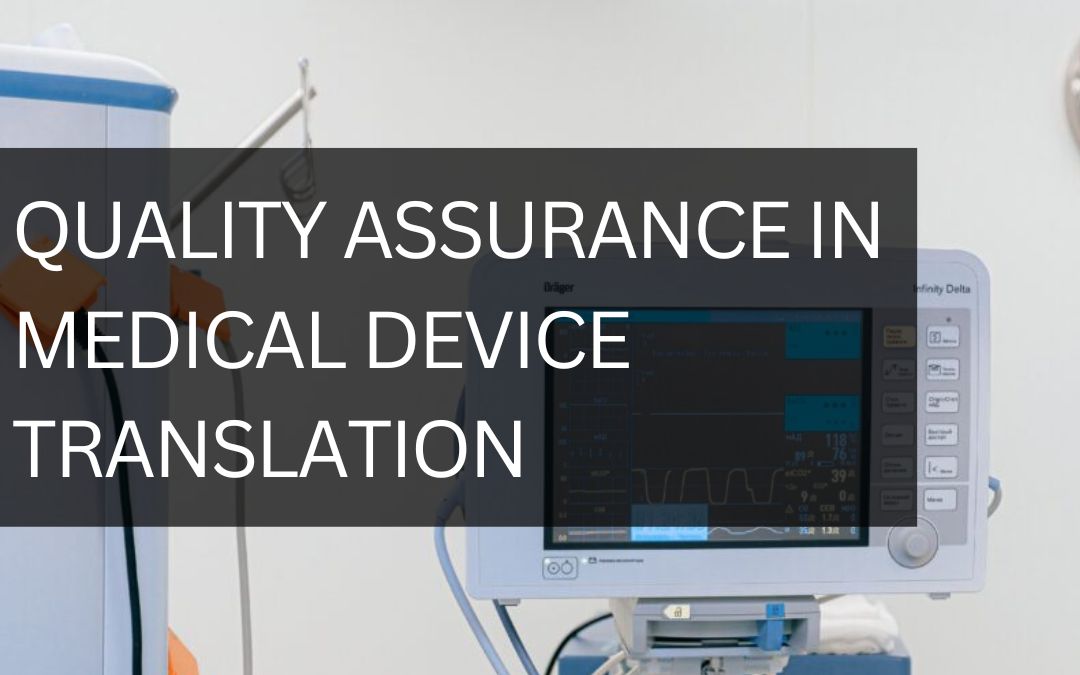When it comes to the medical device industry, where a slight misinterpretation or error can lead to severe consequences, the importance of quality assurance in translation cannot be overstated. It is the cornerstone to ensure safety, accuracy, and compliance in a sector characterized by linguistic diversity and strict regulatory frameworks.
Significance of Translation in Medical Devices Industry
With a global marketplace and the incessant demand for medical innovations, manufacturers are venturing into diverse linguistic territories. Accurate translation is pivotal to make medical devices accessible and comprehensible to users from different linguistic backgrounds, ensuring user safety and adherence to international regulations.
Challenges in Medical Device Translation
- Complexity of Medical Terminology: Medical devices encompass intricate terminologies and concepts that demand precision and clarity.
- Diverse Regulatory Landscape: Varied regulatory requirements across countries necessitate meticulous attention to detail and compliance.
- High Stakes: Given the potential impact on human lives, any inaccuracies or mistakes in translation can have grave consequences.
Role of Quality Assurance in Medical Device Translation
Quality assurance (QA) is integral to validate the accuracy, reliability, and compliance of translated medical device content. It involves systematic review processes, verification methods, and stringent checks to ensure that translations meet the highest standards of quality and safety.
Key Components of QA in Medical Device Translation
- Accuracy: Ensures the translated content precisely conveys the original message without any distortions or omissions.
- Consistency: Maintains uniformity in the use of terms and expressions throughout the translated documents.
- Compliance: Verifies adherence to regulatory standards and guidelines specific to the medical device industry and the target market.
- Clarity: Checks for readability, understandability, and elimination of ambiguities in the translated content.
Steps to Ensure Quality in Medical Device Translation
- Engage Specialized Translators: Employ translators with expertise in medical devices and profound knowledge of medical terminologies and concepts.
- Develop a Translation Style Guide: Create comprehensive guidelines outlining the preferred style, tone, terminologies, and formatting.
- Implement Multiple Review Layers: Incorporate several stages of review, including proofreading, editing, and validation, to detect and rectify errors.
- Leverage Translation Memory Tools: Use advanced tools to maintain consistency and accelerate the translation process.
- Conduct Back Translation: Translate the content back to the source language to verify accuracy and identify discrepancies.
- Solicit Feedback from Subject Matter Experts: Seek insights and validation from medical experts to ensure the translated content is technically sound and accurate.
Impacts of Effective QA in Medical Device Translation
- Enhanced User Safety: Accurate translations mitigate risks of misuse or misunderstanding, contributing to user safety and wellbeing.
- Global Compliance: Adherence to international regulations and standards facilitates smooth market entry and acceptance.
- Brand Integrity: High-quality translations reinforce brand reputation, trust, and credibility in the global market.
- Optimized Costs: Rigorous QA processes prevent costly errors, revisions, and potential legal ramifications, optimizing overall translation expenses.
Case Studies and Best Practices
Several medical device manufacturers have successfully implemented robust QA processes in translation, setting benchmarks and best practices in the industry. These real-world examples underscore the significance of meticulous QA in delivering safe, compliant, and high-quality medical device translations, enhancing global accessibility and user experience.
Conclusion: Elevating Safety through Quality Assurance
Quality assurance in medical device translation is a meticulous endeavor that stands at the intersection of linguistic excellence, technical accuracy, and regulatory compliance. It is the linchpin to safeguard user safety, enhance global accessibility, and uphold brand integrity in the diverse and stringent landscape of the medical device industry.
In a domain where precision is paramount and the stakes are high, the commitment to quality assurance in translation is not just a procedural necessity; it is a moral obligation. It is about fostering a culture of excellence, responsibility, and unwavering attention to detail, ensuring that every word, every term, and every piece of information is conveyed accurately, clearly, and safely.
The relentless pursuit of quality in medical device translation is not merely a journey towards linguistic and technical perfection; it is a journey towards a world where medical innovations and solutions transcend linguistic barriers, reaching every corner of the globe, ensuring the safety and wellbeing of diverse populations. In essence, it is about translating the promise of medical advancement into the reality of universal health and safety.

